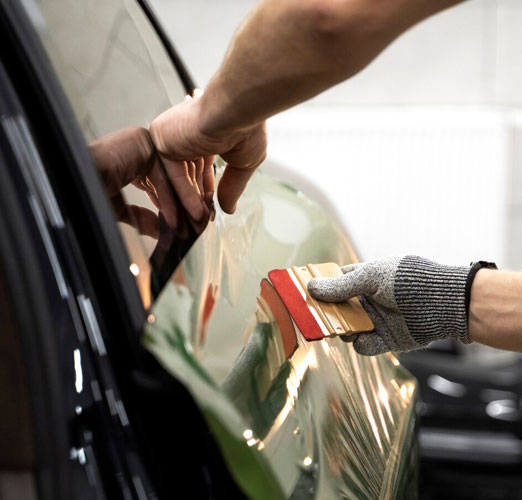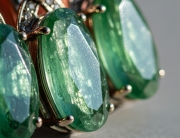When it comes to preserving your vehicle’s pristine finish, PPF car protection and Nano Ceramic Coating are two of the most advanced technologies available today. Among these, self-healing Paint Protection Film (PPF) has captured the attention of car enthusiasts and professionals alike. But what exactly is self-healing PPF, and how does it work? In this blog, we’ll dive deep into the science behind self-healing PPF and explain how this revolutionary product keeps your car looking brand new.
What Is Self-Healing PPF?
Paint Protection Film (PPF) is a clear, thermoplastic urethane film that is applied to the surface of a vehicle to protect it from scratches, chips, stains, and environmental contaminants. Self-healing PPF goes a step further by repairing minor scratches and swirls on its own — a feature made possible by cutting-edge material science.
The Evolution of Paint Protection
From Wax to Nano-Tech
In the past, car owners relied on waxes and sealants to protect their paint jobs. Over time, the industry saw the introduction of Nano Ceramic Coating, which created a hardened, hydrophobic layer on the surface of the car. Although Nano Ceramic Coating provides excellent protection against UV rays, chemicals, and water spots, it doesn’t have the ability to physically heal scratches.
This is where self-healing PPF shines — it not only offers the same level of protection as ceramic coatings but also actively repairs surface-level damage.
How Self-Healing PPF Works
The Science of Thermoplastic Polymers
The secret behind self-healing PPF lies in its thermoplastic polyurethane (TPU) layer. TPU is a class of plastic known for its flexibility, transparency, and resistance to oil, grease, and abrasion. But most importantly, TPU has elastic properties that allow it to return to its original shape when exposed to heat.
Self-healing PPF typically consists of multiple layers:
- Top Coat Layer – This is where the self-healing magic happens. It’s designed to “flow” or “reform” when exposed to heat, making minor scratches disappear.
- TPU Core Layer – The thickest layer, providing shock absorption and impact resistance.
- Adhesive Layer – Allows the film to bond securely to the car’s paint without damaging it.
Role of Heat Activation
When a minor scratch occurs, it disrupts the top coat of the PPF. However, when the area is exposed to heat—either from the sun, warm water, or a heat gun—the molecular chains in the TPU begin to realign themselves. This reformation process smooths out the scratch, essentially making it vanish from view.
Some high-end self-healing PPF products can even heal at room temperature, thanks to advanced chemical engineering that allows for greater molecular mobility.
Elastic Memory
TPU has something known as “elastic memory,” which means that it “remembers” its original, unblemished shape. When the film is deformed due to a scratch, the memory embedded in its molecular structure helps it return to its original form when energy (heat) is applied. This is a key feature that makes PPF car protection more than just a physical shield.
Advantages of Self-Healing PPF
Scratch and Swirl Resistance
The most obvious benefit is its ability to self-repair fine scratches and swirl marks, which are often caused by improper washing or incidental contact.
Enhanced Aesthetic Longevity
Because the film can heal itself repeatedly, your vehicle maintains a glossy, showroom-like finish for years.
Chemical and UV Resistance
Self-healing PPF also offers excellent resistance to environmental hazards, such as:
- UV rays
- Acid rain
- Bird droppings
- Tree sap
- Road salts
These properties are enhanced when combined with Nano Ceramic Coating, which adds another layer of chemical protection and hydrophobic behavior.
Cost Savings in the Long Run
Though initial installation can be costly, self-healing PPF reduces the need for frequent detailing, paint correction, or even repainting — making it a smart long-term investment.
Comparison: Self-Healing PPF vs. Nano Ceramic Coating
Functionality
- Self-healing PPF: Physically protects against scratches, chips, and scuffs. Offers repairable surface damage.
- Nano Ceramic Coating: Chemically bonds to the paint and offers hydrophobic and UV protection, but cannot heal physical damage.
Thickness and Durability
- PPF is much thicker (up to 200 microns) compared to ceramic coatings (1–2 microns), providing a more robust physical barrier.
Aesthetic Impact
- PPF maintains gloss and can be offered in matte finishes as well. It also masks minor imperfections.
- Ceramic coatings enhance gloss and make the car easier to clean due to their slick surface.
Synergistic Application
Many professionals recommend combining both for ultimate protection — PPF for high-impact areas (hood, bumper, fenders) and Nano Ceramic Coating on top for added hydrophobic and UV resistance.
Real-Life Applications
High-Traffic Areas
Self-healing PPF is often applied to:
- Front bumpers
- Hoods
- Side mirrors
- Door edges
- Rear wheel arches
These areas are most susceptible to damage from road debris and physical contact.
Entire Vehicle Wraps
Some car owners opt to wrap the entire vehicle in PPF, especially if the car is a high-end luxury or exotic model. This not only preserves resale value but also ensures the original paint remains untouched.
Limitations and Considerations
Not All Damage Is Fixable
Self-healing PPF works for minor scratches and swirl marks, but deep gouges or punctures that penetrate the TPU layer cannot be repaired automatically and may require partial replacement.
Heat Requirements
While many films heal under mild heat, some still need external heating to activate the process fully. Climate conditions can affect the film’s self-healing efficiency.
Maintenance Needs
Even though it’s durable, self-healing PPF still requires proper care. Avoid harsh chemicals and abrasive cloths. A regular wash with a pH-neutral soap and a microfiber towel is recommended.
Innovations on the Horizon
Advanced Coatings
New developments are integrating Nano Ceramic Coating into the top coat of PPF, resulting in hybrid films that combine the best of both worlds: hydrophobic properties and self-healing abilities.
Smart Films
Some research is even exploring self-healing PPF with “smart” capabilities — films that can detect environmental conditions and optimize healing based on exposure to UV, moisture, or heat.
Sustainability Focus
With environmental concerns in mind, manufacturers are now working on biodegradable or recyclable self-healing films, which will reduce the ecological impact once the film is removed or replaced.
Best Practices for Maximizing Self-Healing PPF
1. Install by Professionals
Precision installation is crucial. Improper application can cause bubbles, edges peeling, or visible seams. Certified technicians ensure perfect alignment and adhesion.
2. Combine with Nano Ceramic Coating
A top layer of Nano Ceramic Coating on top of your PPF can:
- Increase surface slickness
- Enhance gloss and shine
- Improve stain and water resistance
- Extend the life of the film
3. Regular Maintenance
Maintain your PPF with:
- Gentle hand washing
- pH-balanced car shampoo
- Avoidance of automatic car washes with brushes
- Periodic inspection and spot-heating if necessary
4. Timely Repairs
If you notice damage that doesn’t heal, get the section inspected. Partial replacement is often possible without redoing the entire film.
The Future of PPF Car Protection
As material science advances, PPF car protection is set to become even more intelligent and efficient. We’re moving toward self-healing materials that require less external stimulation, are more eco-friendly, and offer extended longevity.
Soon, your car’s protection won’t just be passive — it’ll be adaptive, smart, and nearly invisible, ensuring that your vehicle remains in mint condition for decades.
Final Thoughts
Self-healing Paint Protection Film represents one of the most impressive innovations in automotive care. With its ability to automatically repair minor scratches and maintain the visual integrity of a vehicle, it’s a must-have for anyone serious about car preservation.
When combined with Nano Ceramic Coating, you get a dynamic duo that offers unmatched protection against both physical and environmental damage. Whether you’re driving a supercar or a daily commuter, investing in PPF car protection can save you thousands in paint repairs and help your vehicle retain its beauty and value over time.






Leave A Comment